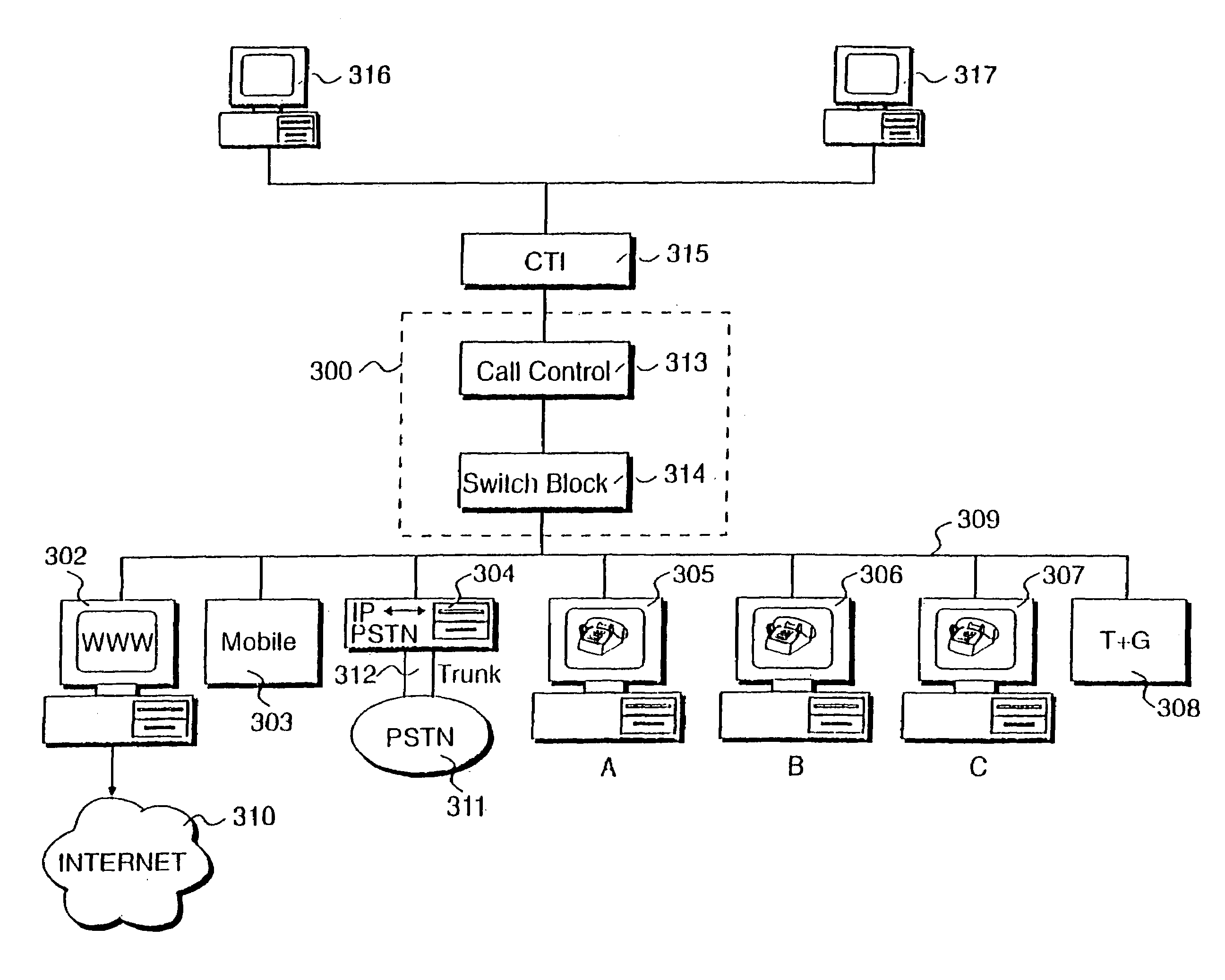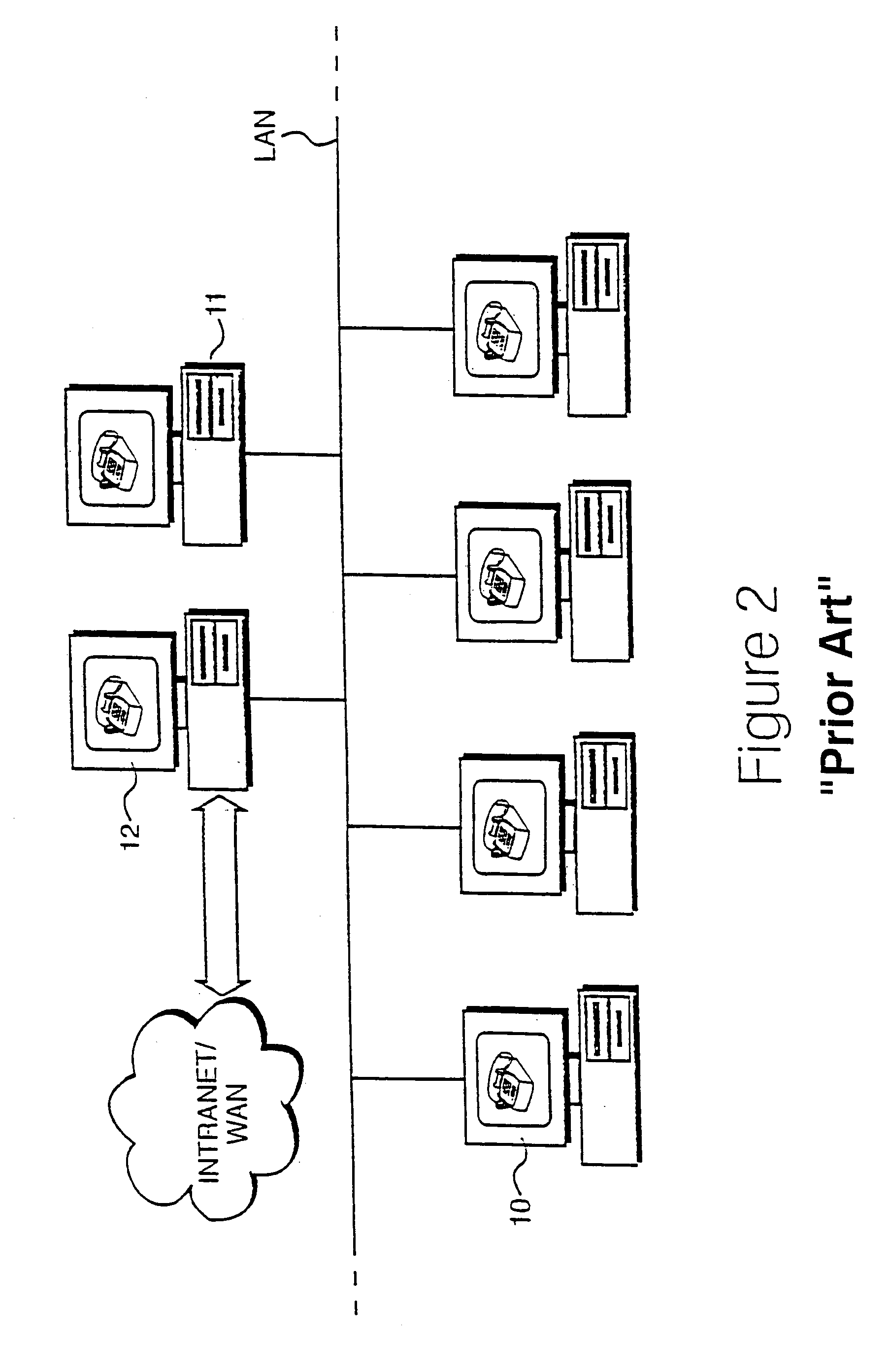Processing device network
a processing device and network technology, applied in the field of communication devices, can solve the problems of not being able to guarantee delivery, other protocols are less reliable, and not being able to facilitate the setting up of audio voice communications
- Summary
- Abstract
- Description
- Claims
- Application Information
AI Technical Summary
Benefits of technology
Problems solved by technology
Method used
Image
Examples
Embodiment Construction
[0043]Referring to FIG. 8 of the accompanying drawings, there is shown a communications exchange apparatus for implementing communications connections between a plurality of computers 302–308 connected by a local area network 309, for example an ethernet in the form of co-axial cable or twisted wire pair. Each computer has at least one communications port physically connected to the LAN. Each of the plurality of computers 302–308 are networked using a conventional ethernet protocol, in which each port has its own specific address.
[0044]Computers may communicate with each other on a point-to-point basis over the local area network 309 via their communications ports. For example, computer 305 having port address A may communicate with computer 307 having port address C, provided computer 305 knows the port address C in order to communicate with computer 307. The computers may communicate with each other by sending packetized telephone frequency signals over the local area network 309 ...
PUM
 Login to View More
Login to View More Abstract
Description
Claims
Application Information
 Login to View More
Login to View More - R&D
- Intellectual Property
- Life Sciences
- Materials
- Tech Scout
- Unparalleled Data Quality
- Higher Quality Content
- 60% Fewer Hallucinations
Browse by: Latest US Patents, China's latest patents, Technical Efficacy Thesaurus, Application Domain, Technology Topic, Popular Technical Reports.
© 2025 PatSnap. All rights reserved.Legal|Privacy policy|Modern Slavery Act Transparency Statement|Sitemap|About US| Contact US: help@patsnap.com



